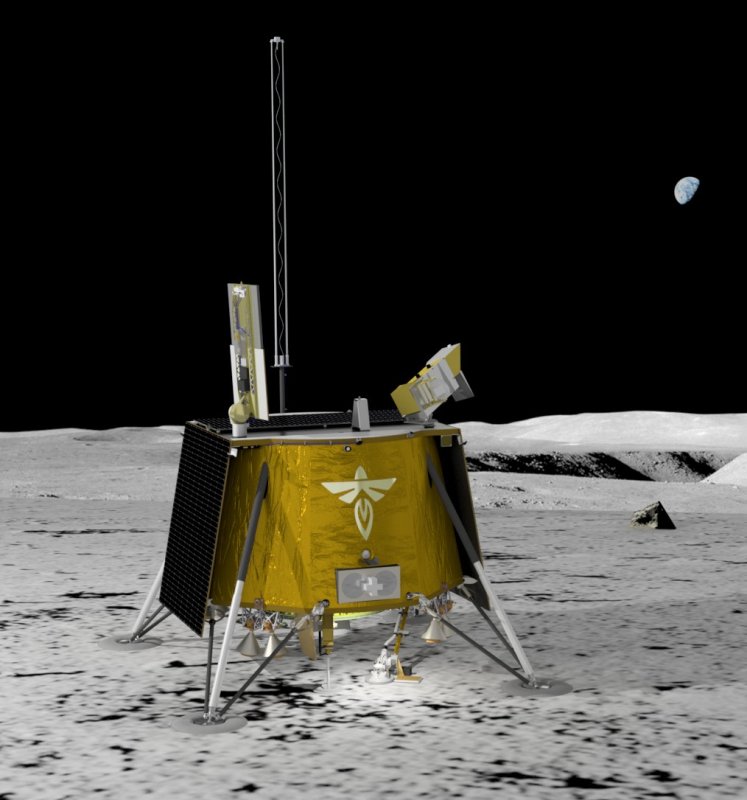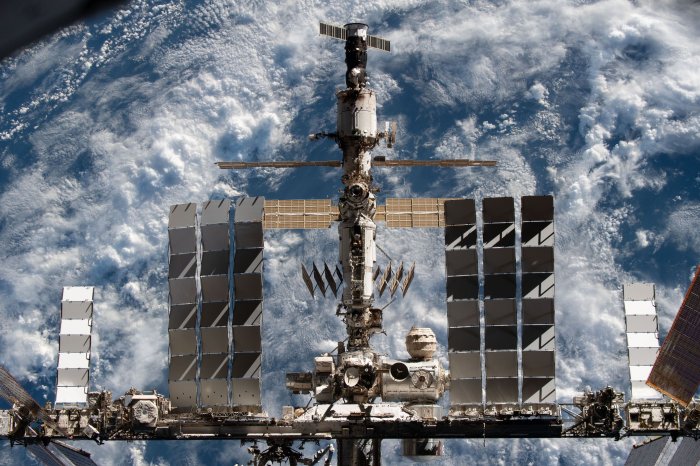An illustration shows the Blue Ghost lunar lander on the surface of the moon, which is a mission planned in 2023. Image courtesy Firefly Aerospace
ORLANDO, Fla., Feb. 26 (UPI) -- Texas-based Firefly Aerospace plans to launch its new Alpha rocket from California in April and send a lunar lander to the moon by 2023.
The 95-foot-high launch vehicle is designed to lift satellite payloads that weigh just over a ton into low-Earth orbit, or slightly lighter loads to a higher orbit.
Firefly has existed for only four years, and would join a small, but growing, group of private companies that can reach space with their own rockets, including SpaceX, Rocket Lab, Virgin Orbit and Astra.
But Firefly is positioned to beat the competition because it plans to offer rockets, spacecraft to service satellites and even lunar landers, CEO Tom Markusic said in an interview this week.
"The overall development of Alpha has taken a year longer than we hoped it would," Markusic said. "But I'm not concerned at all about surviving. I'm concerned about building a $10 billion company in the coming years."
The number of employees at Firefly, which is based in the Austin suburb of Cedar Park, Texas, has doubled in the last year to 330, he said.
Firefly has renovated a former United Launch Alliance launch pad at Vandenberg Air Force Base for its first launch, which also took longer than anticipated, Markusic said. Travel restrictions and supply chain disruptions due to the COVID-19 pandemic caused delays, he said.
Markusic formerly was a scientist at NASA, a test site director for SpaceX and and a vice president at Virgin Galactic. He said he believes Firefly's Alpha will find a "sweet spot" in the launch market because it has a smaller, cheaper rocket than a company like Elon Musk's SpaceX.
Launching a SpaceX Falcon 9, which is more than 200 feet high with its capsule mounted on top, costs $62 million. Firefly aims to launch for $15 million. Each company can split the payloads among several customers for so-called rideshare missions.
Alpha's Reaver engines emit a combined 165,500 pounds of thrust -- less than 10 percent of Falcon 9's 1.7 million pounds.
In comparison, small launcher Rocket Lab's Electron rocket emits up to 35,000 pounds of thrust, and a mission costs about $5 million.
Markusic said Firefly is committed to the April launch timeframe despite previous delays.
"I've been living here in California full-time to encourage the team," said Markusic, whose permanent residence is in Texas.
In February, Firefly landed a $93.3 million contract from NASA to build its lunar lander -- Blue Ghost -- and launch it to the moon by 2023.
That is part of NASA's Artemis program to land people on the moon by 2024, although that goal is in doubt because Congress hasn't met NASA's funding requests.
Alpha plans to rely partly on advice from the Israel Space Agency to build the Blue Ghost. The Israeli agency successfully built and launched the Beresheet robotic lunar lander in 2019, but it suffered a gyroscope malfunction and crashed on the moon.
Firefly's subsidiary, Firefly Black, won a $9.8 million contract in December to launch small satellites for NASA in coming years. Firefly Black focuses on government-contracted launches for the Department of Defense and other agencies.
And on Thursday, Firefly announced that San Diego-based General Atomics Electromagnetic Systems Group chose it to launch another NASA mission carrying science experiments in 2022.
Firefly still plans to build a production factory for Alpha near Kennedy Space Center in Florida, Markusic said. Details of that project will be finalized in July after the company finishes a new round of investment fundraising, he said.
Firefly also plans to build a larger rocket, the Beta, and a space plane.
Its plans, if realized, could make Firefly the most comprehensive space company next to Elon Musk's SpaceX, said Chris Quilty, space analyst and founder of Quilty Analytics in St. Petersburg, Fla.
"Firefly is the leading smaller launch company in terms of an integrated approach," Quilty said.
Thousands of small satellites are being planned for launch in coming years, he said, but many small launchers are emerging.
SpaceX's rideshare launches, with multiple small satellites, represent competition for Firefly, Quilty said.
"There's over 100 companies developing small launch capability, and they just won't all survive," he said.
The International Space Station is pictured from the SpaceX Crew Dragon Endeavour during a flyaround of the orbiting lab that took place following its undocking from the Harmony module’s space-facing port on November 8. Photo courtesy of NASA
















